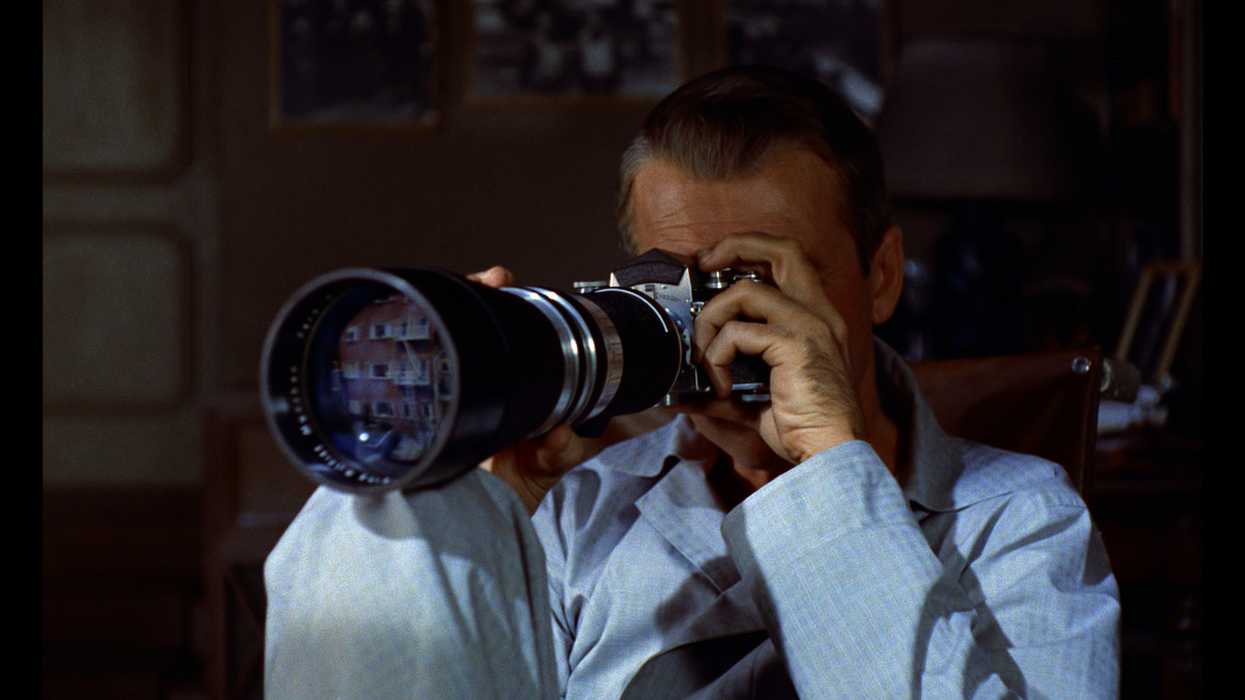4 Cinematic Techniques Alfred Hitchcock Uses in 'Rear Window' to Turn You into a Voyeur
This is how the Master of Suspense made audiences become voyeurs whether they wanted to be one or not.

'Rear Window'
Watching Alfred Hitchcock's 1954 thriller Rear Window is an interesting and somewhat unusual experience.
On one hand you're a passive spectator watching a film about a recently-incapacitated photographer spying on his neighbors out of boredom, but on the other you are an extension of good ol' Jimmy Stewart's intrusive gaze. In essence, you become another person confined to that stuffy old apartment with nothing more than a pair of binoculars and a morbid curiosity that goes a little too far.
But how does Hitchcock put you into that voyeuristic role? That's a question that Matt Draper answers in this interesting video essay.
For all intents and purposes, Rear Window is a film about voyeurism, so it makes sense that Hitchcock's approach to the film would be to force audiences to become voyeurs. And there are a lot of cinematic elements at play in Rear Window that help put audiences into the role.
Set design
The set is designed to give you an easy map to follow of their surroundings. You get a master shot of all of the neighboring apartments that Jimmy Stewart's character can see, so you too can see each player clearly. This allows you to make as much sense of the diegetic world within the film as you would the real world that surrounds you, which is an important element of being a successful voyeur.
Camera movement
Hitchcock's POV shots are classic in this film. The camera movements mimic those of a real person slowly panning over a scene to understand what's going on. These kinds of shots help sell you the illusion of voyeurism, to give you the feeling that you are there in the room with Stewart looking at the goings-on of all of these unusual neighbors.
Shot size
The size of a shot can often indicate the subject's importance. If you move in on a subject, it's like saying, "Hey, pay extra close attention to this thing." So, when this occurs in Rear Window, Hitchcock is trying to communicate that what Stewart is looking at is of heightened importance to him, like a woman putting on clothes or a man seemingly committing murder.
Editing
One often overlooked element that Hitchcock employs in Rear Window turn viewers into voyeurs is editing. Our own Justin Morrow delved into this a few years ago, suggesting that because the film is essentially one "about looking," Hitchcock uses the Kuleshov Effect, something that was well understood by the director, to sell the idea that Stewart's character is constantly looking and observing his surroundings. Morrow states:
Rather than an objective POV shot, we are seeing what Stewart sees, so we as audience members become even more voyeuristic than we already are (because movies are nothing if not exercises in voyeurism, in looking into other people's lives).
Rear Window is yet another great example of how Hitchcock manages to influence and even manipulate his audience into believing and participating in his cinematic experience. By simply using POV shots, clever editing, and camera work, the director transformed his audience from mere spectators into active participants of the voyeuristic exploits of Rear Window's main character.
Source: Matt Draper













